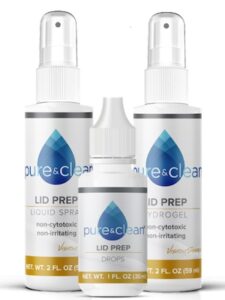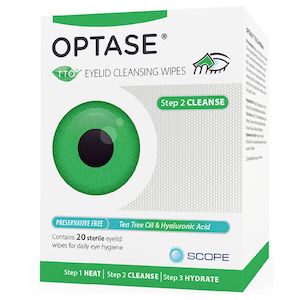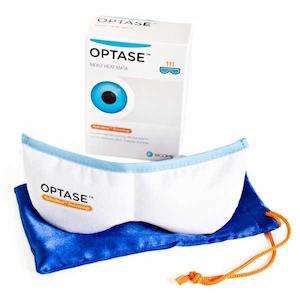Blepharitis and Styes
Blepharitis is an inflammation of the eyelids, usually related to an overabundance of bacteria in the eye lashes.
In addition to swollen eyelids, symptoms of blepharitis can include blurry vision, light sensitivity, burning, stinging, tearing, dryness or watering, irritation and itching, redness, and occasionally dandruff-like scales that stick to the eyelid. The eyelashes may be crusted when you wake up from sleeping. Blepharitis is associated with dry eye, frequent styes and hordeolums, meibomian gland dysfunction, dandruff, acne rosacea and ocular rosacea, and eyelash mites, also called demodex. Blepharitis is a chronic condition which requires regular treatment. Your doctor may recommend more treatments than those listed here.
Common treatments:
Warm Compresses:
A microwaveable warm compress mask placed on closed eyes for 5-10 minutes can help clear blocked meibomian glands and prevent meibomian gland dropout. After using a warm compress, you may notice your vision is slightly blurry. The blurriness is caused by the melted debris and should resolve quickly. Warm compresses work best when they are a regular part of your daily routine. Warm compresses are hard to find over the counter. You can buy them at Achord Eye Clinic or online. Common brands include Optase and Bruder.
Lid Cleaning:
Lid scrubbing and cleaning can help remove some of the debris and bacteria from the lids and lower the amount of bacterial build up on the lids. Lid cleaning works best if they are used after using a warm compress on a daily basis. To clean lids, gently scrub the base of the eyelashes for around 15 seconds per eyelid. There are several over the counter lid cleaning wipes and foaming cleansers you can try. You can buy Pure and Clean lid prep, Oust, or Optase lid cleaner from us here in the office. Other recommended over the counter options include Cliradex, WeLoveEyes Tea Tree Oil cleanser and the EyeEco Tea Tree Oil cleanser.
 General tips
General tips
- Make sure your hands are washed and clean any time you are touching near your eyes
- When you use makeup, make sure you completely remove the makeup debris at night.
- Do not wear contact lenses or make-up if your eyes are especially irritated, red, or stinging. This increases your risk for a bacterial infection.
- These same treatments are very helpful if you have a stye or a hordeolum. If that is your main issue, you want to use the warm compresses more frequently – as many as four or five times a day, for five minutes each time.

